Have you ever heard of polyphenols and how beneficial they are for health? Polyphenols are known to reduce blood sugar levels and enhance insulin sensitivity in diabetic patients, reduce inflammation in people with chronic diseases, decrease the incidence of heart disease in high-risk groups, and stimulate brain function in people with neurodegenerative disorders.
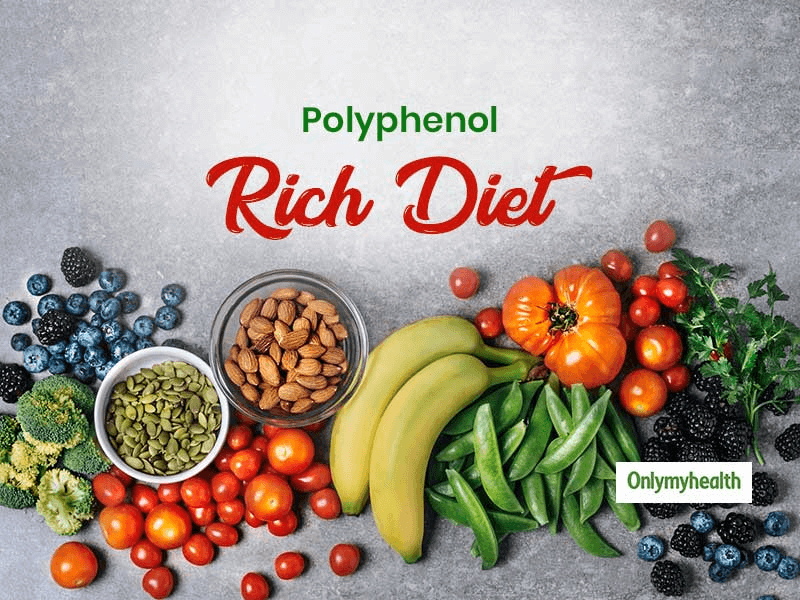
This is not all, phenols also reduce the risk of cancer in the general population, improve digestion, and balance the level of lipids in our body. However, neither people are much aware of the benefits of phenols nor the foods that are rich in them.
So, we took it upon ourselves to help you improve your health by incorporating some simple and easily available polyphenol-enriched foods and drinks into your diet.
So, let us know more about them.
What are Polyphenols
Polyphenols are phytochemicals that are naturally derived from plants. Additionally, they can be obtained from supplements. These organic compounds are infused with antioxidants that are responsible for the countless health benefits of phenols.
There are about 8000 types of polyphenols. However, they are divided into a few major categories to keep the classification simple. These categories include:
-
Flavonoids: The most common type of polyphenols is flavonoids and they are found in vegetables like onion and drinks like tea.
-
Phenolic Acids: The second commonest type of polyphenols is phenolic acids and they are obtained from fruits like grapes, dry fruits like walnuts, and drinks like coffee.
-
Polyphenolic Amides: Polyphenolic amides are the types of polyphenols found in hot and spicy foods like chili pepper.
-
Lignans: These are a part of grains like sesame and legumes like beans.
-
Ellagic Acid: The polyphenols found in berries like raspberries and strawberries are ellagic acids.
-
Stilbenes: These make a minor category of polyphenols and are found in grape wine and peanuts.
Drinks/Foods That are High in Polyphenols
1. Berries
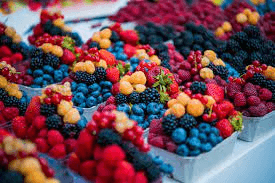
Polyphenols like flavonoids, phenolic acids, and ellagic acids are found in berries including raspberry, black currants, blueberries, elderberries, and strawberries. The highest concentration of phenols is in black chokeberries as
a study by Food Technology and Biotechnology
shows.
Additionally, the content of phenols is higher in the skin of the berries rather than in the pulp.
2. Coffee and Tea
Seeing coffee and tea on the list must have excited you, right? Coffee beans and tea leaves are rich in polyphenols. The more fresh, natural, and organic coffee/tea is, the better its polyphenol content.
The research
elaborates on the benefits of polyphenols in coffee and tea.
Additionally, heating and roasting coffee beans and tea grounds can reduce their concentration. So, it is best to consume such drinks with mild cooking.
3. Cocoa Powder and Dark Chocolate
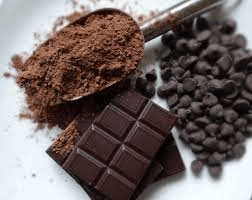
Cocoa, dark chocolate, and milk chocolate are all good sources of polyphenols. 100g of cocoa powder contains more than 3000 mg of polyphenols, 100g of dark chocolate has 1600 mg of polyphenols, and the content of polyphenols in 100g of milk chocolate is 236 mg.
These polyphenols have beneficial effects on the brain, inflammation, and cardio-protective mechanisms according to
a study
.
4. Nuts
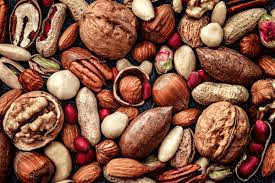
Nuts including chestnut, hazelnut, almonds, pecan nuts, and walnuts are also high in polyphenols such as anthocyanins, phenolic acid, lignans, stilbenes, tannins, and naphthoquinones.
100g of nuts contain anywhere between 1200 mg to 200 mg of polyphenols.
A study
has established the details of polyphenols in tree nuts and their action in the body.
5. Legumes
Legumes include white beans, black beans, chickpeas, cowpea, and green peas. The polyphenols present in legumes include flavonoids, tannins, phenolic acids, and some other phenolics explains
research
on legumes.
Moreover, the quantity of polyphenols in dark legumes like black beans is more than in light-colored legumes like white beans.
6. Whole Grain Wheat
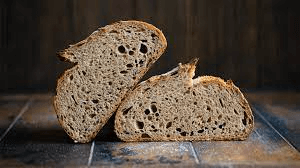
Whole-grain wheat bread and baked items are also readily available sources of polyphenols. A
detailed analysis
of polyphenols in wheat illustrates polyphenols are found in both the wheat bran animals eat and the wheat grains humans consume. 201 mg of polyphenols are present in 100g of wheat flour.
7. Virgin Olive Oil and Sesame Seed Oil
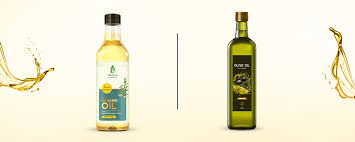
Oil acquired from olives and sesame seeds also has a high portion of polyphenols including oleuropein, hydroxytyrosol, sesamol, and sesamol. These polyphenols have anti-cancer, anti-inflammatory, and anti-oxidative properties.
Moreover, they play a role in balancing lipid profiles and treating patients with hypercholesterolemia, as
a study
in the International Journal of Preventive Medicine found.
8. Vegetables
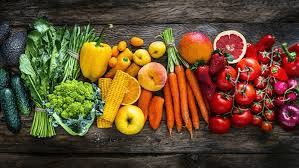
If you are not too fond of vegetables like spinach, onion, potato, shallots, broccoli, and carrots, it is time to start eating them regularly as they contain isorhamnetin, carotenes, cinnamic acid, flavonols, and gallic acid.
These polyphenols are beneficial for patients with diabetes, obesity, and brain health. So, a diet with a balanced portion of vegs and fruits is a must for a healthy life
explains the article
published in Research Gate.
9. Soy
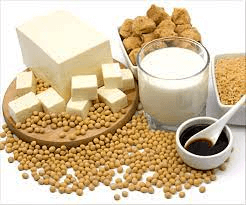
Soy in multiple forms like soy meat, soy yogurt, soy milk, and roasted soybeans is full of isoflavonoids like genistin. The quantity of polyphenols in these products is a few 100 mg per 100g of soy.
Especially the products having fermented soy have therapeutic properties as
an article in Science Direct
highlights.
10. Fruits Other Than Berries
Berries are not the only fruits infused with polyphenols. Apples, grapefruits, peaches, oranges, and apricots also contain phenolic acids like catechin, cyanidin, ferulic acid, caffeic acid, and flavonols.
The polyphenols of fruits are excellent for cardiovascular diseases. So, such fruits can be taken regularly to protect your heart and vessels as
an interventional study
has suggested.
11. Fruit Juices

If you cannot take whole fruits, you should resort to fruit juices and smoothies to gain the advantages of polyphenols present in fruits. Just like fruits, the juices of pomegranate, apple, orange, and grapefruits offer flavanoid and phenolic acids.
Additionally, bilberry, blackcurrant, mango, and rosehip juice are great for prediabetics and diabetics. You can read more about it in
research
by Jie Xu and her fellows.
12. Spices and Seasonings
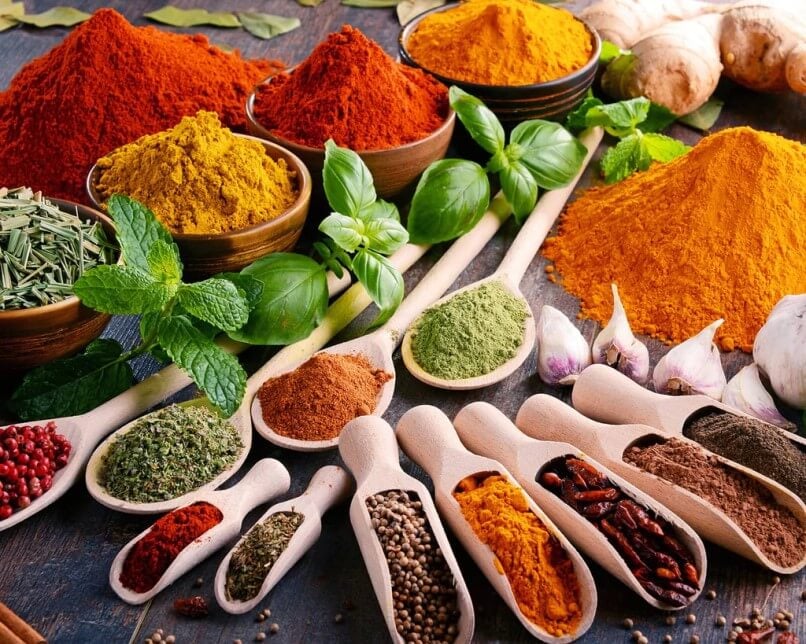
Spices and seasonings like cloves, peppermint, turmeric, rosemary, oregano, thyme, ginger, and star anise contain a high amount of polyphenols ranging from 15000+ mg/100g to 100mg/mg. The specific polyphenol in clove is eugenol, turmeric is curcumin, and ginger is gingerol and shogaols.
These spices help in dealing with metabolic disorders because
they act against oxidative stress
.
13. Celery Seed and Flaxseed
While seeds can be used as a seasoning, they can also be eaten raw or taken in tea. Celery seeds are enriched in flavanoids and flaxseed are a rich source of lignans and phenolic acids offering 1528mg of polyphenols in 100g.
These seeds play a role in maintaining bone health, reducing inflammatory conditions, regulating blood pressure, and
lowering sugar levels
.
14. Dried Herbs
Dried herbs like Mexican oregano have 2319 mg/100 g of flavonoids, dried sage contains 1207mg/100 g of phenolic acid and carnosic acid, dried basil has 332 mg/100g of phenolic acids, and dried lemon verbena has 106 mg/100g of flavonoids and verbascoside.
The detailed content value of polyphenols in herbs is further explained in
an article
.
15. Olives
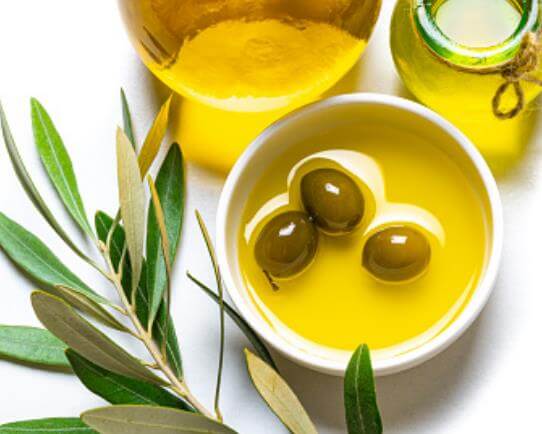
Both black and green olives contain good monounsaturated fats and polyphenols including phenolic acid, flavonoids, oleuropein, and tyrosols. The content of polyphenols in black olives is 560mg per 100g and in green olives is 340mg per 100g.
The polyphenols of olives are known to play a role in treating inflammation as
Dr. Monica Buccintini
along with her fellows says.
16. Plums and Prunes
Whether it’s plums or their dried form prunes both offer polyphenols like quercetin, anthocyanins, and hydroxycinnamic acids in addition to their delicious taste. Fresh plums are more nutritious as compared to
dried plums
.
However, if you dry plums at 85 degrees, the antioxidant content is increased. So, you can gather the importance of the right temperature while drying.
17. Vinegar
Vinegar, especially fruit vinegar is rich in polyphenols like gallic acid, coumaric acid, chlorogenic acid, and caffeic acid. Additionally, red wine vinegar and balsamic vinegar contain tyrosols, stilbenes, and hydroxybezaldehydes. Additionally, 100 g of vinegar has 21mg of vinegar.
The polyphenols of vinegar can be used to normalize intestinal microbiota and improve
gut health
.
18. Curry Powder
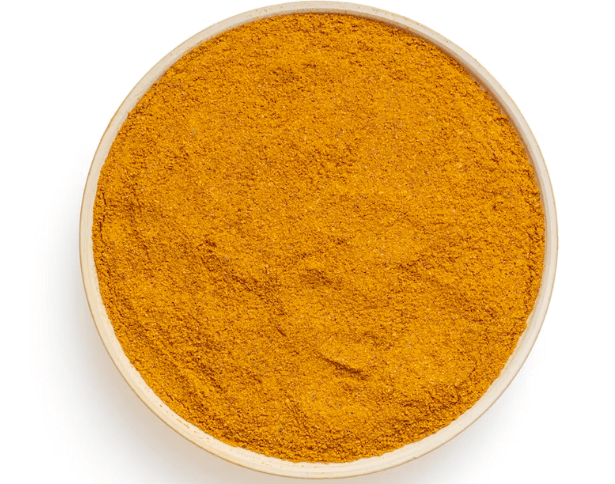
We have talked about individual spices, herbs, and seasonings already. However, curry powder is a mixture of polyphenol-enriched herbs and spices like coriander, black pepper, ginger, cinnamon, turmeric, cardamom, cumin, and more.
So, 100 g of curry powder has 285 mg of polyphenols. A
randomized controlled trial
has shown the benefits of curry in the management of postprandial glucose levels.
19. Tempeh
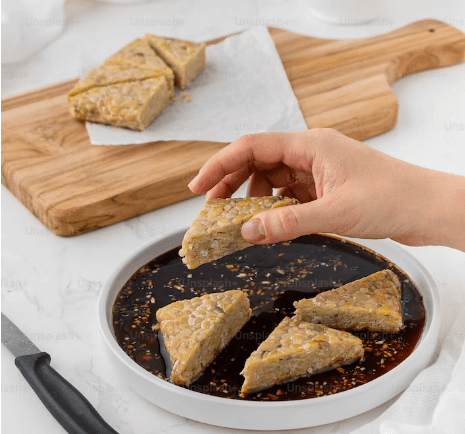
Tempeh is an Indonesian dish prepared with fermented soybeans. This delicious dish can provide you with a much-needed dose of isoflavonoid with 148 mg of polyphenols in its 100 g.
The quantity of polyphenols in tempeh reaches its maximum value after
4 days of fermentation
20. Rye Flour
Whole rye flour and refined rye flour also contain phenolic acids and alkyl phenols. However, the content of phenols in whole rye flour is more than thrice as compared to refined rye flour.
The polyphenol profile and antioxidant activity has been well-explained in the
International Journal of Food Science
.
Conclusion
Many foods around us are full of polyphenols that can improve your health like nothing else. Some foods and drinks offer a large quantity of polyphenols while others offer a moderate amount of these phytochemicals. So, in this article, we have talked about the excellent sources of these anti-oxidants.
References
1.
Mandica-Tamara Tolić
,
Irena Landeka Jurčević
,
Ines Panjkota Krbavčić
. Phenolic Content, Antioxidant Capacity, and Quality of Chokeberry. Food Technology and Biotechnology. 2015 Jun; 53(2): 171-179. PubMed Central.
2.
Przemysław LIczbiński
,
Bożena Bukowska
. Tea and coffee polyphenols and their biological properties are based on the latest in vitro investigations. 2021 Nov 18. PMID: 34815622, PMCID:
PMC8601035
.
3.
Thea Magrone
,
Matteo Antonio Russo
,
Emilio Jirillo
. Cocoa and Dark Chocolate Polyphenols: From Biology to Clinical Applications. 2017 Jun 9. PMCID: PMC5465250.
4.
Bradley W Bolling
,
Diane L McKay
, and
Jeffrey B Blumberg
. The phytochemical composition and antioxidant actions of tree nuts. 2016 Sep 6. Asia Pac J Clin Nutr. 2010; 19(1): 117–123. PMID: 20199996.
5. Mayra Nicolás-García, Cristian Jiménez-Martínez, Madeleine Perucini-Avendaño. Phenolic Compounds in Legumes: Composition, Processing and Gut Health. June 29th, 2021. Intechopen.
6.
Ana Belén Martín-Diana
,
María Jesús García-Casas
,
Cristina Martínez-Villaluenga
,
Juana Frías
. Wheat and Oat Brans as Sources of Polyphenol Compounds for Development of Antioxidant Nutraceutical Ingredients. 2021 Jan 7. PMID: 33430507.
7.
Seyedeh Mahdieh Namayandeh
,
Fatemeh Kaseb
, and
Soheila Lesan
. Olive and Sesame Oil Effect on Lipid Profile in Hypercholesterolemic Patients. Sep 2013. PMID: 24130948.
8. Giuseppina Pace, Fabio Vianello, and Camila Correa. Polyphenols in Fruits and Vegetables and Their Effect on Health. July 2014.
9. Azin Khosravi, Seyed Hadi Razavi. Therapeutic effects of polyphenols in fermented soybean and black soybean product. June 2021. Journal of Functional Foods. ELSEVIER.
10.
Mary F.-F. Chong
,
Rory Macdonald
,
Julie A. Lovegrove
. Fruit polyphenols and CVD risk: a review of human intervention studies. 19 Oct 2010. Cambridge University Press.
11.
Jie Xu
,
Tommy Jönsson
,
Merichel Plaza
. Probiotic fruit beverages with different polyphenol profiles attenuated early insulin response. 27 Feb 2018. Nutritional Journal.
12. Neetu Singh and Surender Singh Jadav. A review on health benefits of phenolics derived from dietary spices. 2022 Sep 10. PubMed Central. PMID: 36132490
13. Sowmya Binu. Celery Seed: 5 Astonishing Health Reasons For Adding This Nutrient-Dense Seed In The Diet. Aug 09, 2020. netmeds.com
14.
Renata Bieżanowska-Kopeć
* and
Ewa Piątkowska
. Total Polyphenols and Antioxidant Properties of Selected Fresh and Dried Herbs and Spices. 11 May 2022. Department of Human Nutrition and Dietetics, Faculty of Food Technology, University of Agriculture, 30-149 Cracow, Poland
15.
Monica Bucciantini
,
Manuela Leri
,
Pamela Nardiello
,
Fiorella Casamenti
. Olive Polyphenols: Antioxidant and Anti-Inflammatory Properties. 2021 Jun 29. PMID: 34209636.
16.
Antonio Piga
,
Alessandra Del Caro
,
Giampaola Corda
. From plums to prunes: influence of drying parameters on polyphenols and antioxidant activity. Jun 2003. PubMed. PMID: 12769544
17.
Ting Xia
,
Wenhui Duan
,
Zhujun Zhang
,
Shaopeng Li
. Polyphenol-rich vinegar extract regulates intestinal microbiota and immunity and prevents alcohol-induced inflammation in mice. Feb 2021. PubMed. PMID: 33648287.
18.
Sumanto Haldar
,
Siok Ching Chia
,
Sze Han Lee
,
Joseph Lim
. Polyphenol-rich curry made with mixed spices and vegetables benefits glucose homeostasis in Chinese males (Polyspice Study): a dose-response randomized controlled crossover trial. Feb 2019. PMID: 29236165
19.
Maciej Kuligowski
,
Katarzyna Pawłowska
,
Iwona Jasińska-Kuligowska
&
Jacek Nowak
. Isoflavone composition, polyphenols content, and antioxidative activity of soybean seeds during tempeh fermentation. 2017. CyTA Journal of Food.
20.
Dorota Gumul
and
Wiktor Berski
. The Polyphenol Profile and Antioxidant Potential of Irradiated Rye Grains. 2021 Jan 16. PubMed Central. PMID:
33511199
.

 By myulikeadmin
By myulikeadmin



